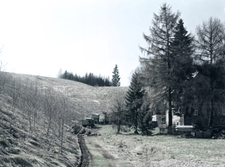-
Topics
subnavigation
Topics
Electromagnetic fields
- What are electromagnetic fields?
- Static and low-frequency fields
- Radiation protection relating to the expansion of the national grid
- High-frequency fields
- Radiation protection in mobile communication
Optical radiation
Ionising radiation
- What is ionising radiation?
- Radioactivity in the environment
- Where does radioactivity occur in the environment?
- What is the level of natural radiation exposure in Germany?
- Air, soil and water
- Radon
- Foodstuffs
- Building materials
- Relics
- Enhanced environmental radioactivity as a result of human influence
- Legacies
- Specialist information
- Industrial residues (NORM)
- BfS laboratories
- Applications in medicine
- Applications in daily life and in technology
- Effects
- What are the effects of radiation?
- Effects of selected radioactive materials
- Consequences of a radiation accident
- Cancer and leukaemia
- Genetic radiation effects
- Individual radiosensitivity
- Epidemiology of radiation-induced diseases
- Ionising radiation: positive effects?
- Risk estimation and assessment
- Radiation protection
- Nuclear accident management
- Service offers
-
The BfS
subnavigation
The BfS
- About us
- Science and research
- Laws and regulations
- BfS Topics in the Bundestag
- Links
Enhanced natural environmental radioactivity by human impact
- Natural radiation exposure is essentially caused by radionuclides which occur in the uranium-238, uranium-235 and thorium-232 decay chains and are found in the earth’s crust.
- Higher concentrations of these radionuclides (compared to the geogenic level) can be released into the environment in particular through mining activities but also through the processing of raw materials.
- The field of radioactive relics – with the exception of regulations on residues of the former uranium mining area in eastern Germany –, however, is still not sufficiently regulated by law.

![]() Recultivated waste rock pile in a uranium mining area
Recultivated waste rock pile in a uranium mining area
Natural radiation exposure is essentially caused by radionuclides which occur in the uranium-238, uranium-235 and thorium-232 decay chains and are found in the earth’s crust. Higher concentrations of these radionuclides (compared to the geogenic level) can be released into the environment in particular through mining activities but also through the processing of raw materials.
While radiation protection is ensured from the start for industrial residues since 2001 on the basis of the Radiation Protection Ordinance (StrlSchV), radiation protection measures for contaminations which have already occurred can only be taken subsequently.
Occurrence
This occurs most importantly in ores of the uranium deposits in Saxony and Thuringia, but it is also valid for deposits of silver, copper, tin and other resources in different German regions, for example the Ore Mountains (Erzgebirge).
Other raw materials with enhanced concentrations of natural radionuclides, such as bauxite and phosphate ores, have been imported on a large scale.
Accumulation in residues during conditioning and processing
During conditioning and processing of the raw materials these radionuclides may accumulate in the residues (including sludges, slags, dusts, ashes, incrustations) and their concentrations may increase considerably compared to the geogenic level so that they must be taken into account from the radiation protection point of view.
Radioactive relics
In the past such residues were deposited on waste heaps or in tailings ponds or even further utilised because people were unaware of - or, in some cases, ignored - the enhanced radioactivity contained therein. Dissolved radionuclides or solid residues can be released through seepage but also through accidents, such as dam failures in tailings ponds, and in the worst case accumulate in river sediments or on alluvial soils.
Partly, former industrial sites of residues with enhanced natural radionuclide concentration were covered with buildings. Depending on the site and usage conditions such contaminations may, in individual cases, cause radiation exposures to members of the public which require subsequent protection measures.
The field of radioactive relics – with the exception of regulations on residues of the former uranium mining area in eastern Germany –, however, is still not sufficiently regulated by law.
State of 2017.09.21


